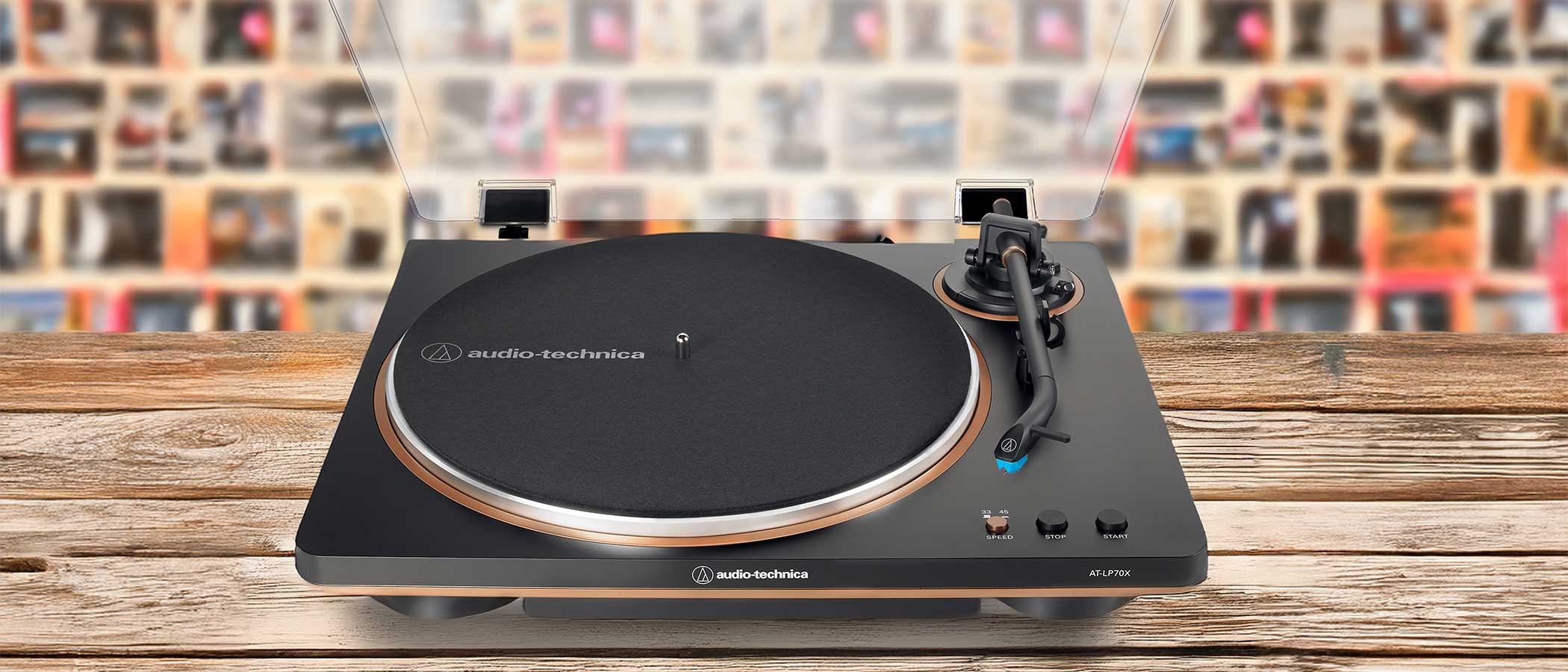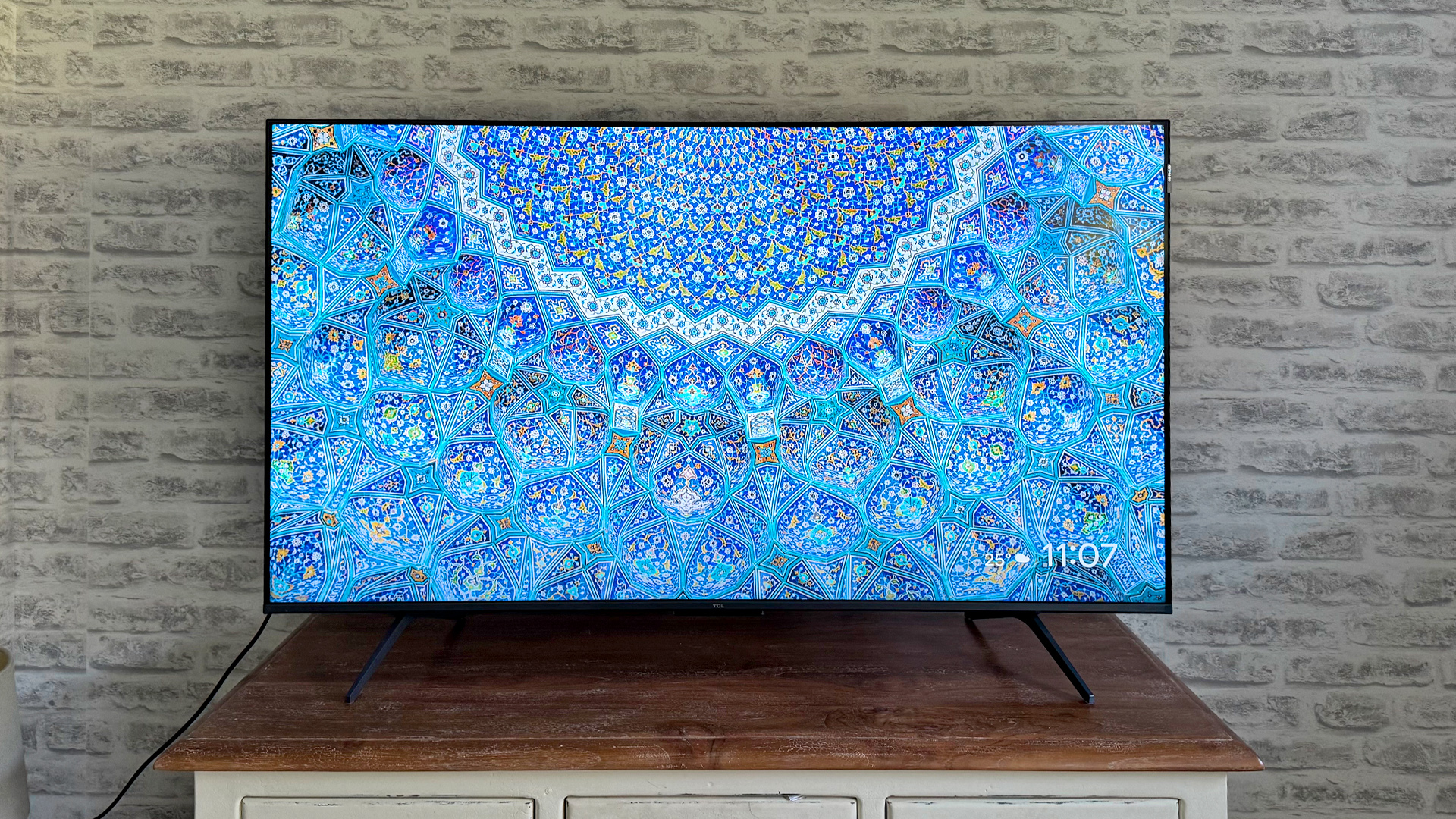Sound+Image Verdict
Automatic operation, almost zero-effort set-up, and performance which is impressive and enjoyable at the price, and easily upgradeable if you want a bit more. The delight here is how much music the AT-LP70X does insert into your system as a very easy-to-use budget turntable.
Pros
- +
Performance at the price
- +
Phono or line-level output
- +
Very easy set-up
- +
Upgradeable cartridge
Cons
- -
Basic looks
- -
Fixed antiskating
Why you can trust What Hi-Fi?

This review originally appeared in Sound+Image magazine, Australian sister publication to What Hi-Fi?. Click here for more information on Sound+Image, including digital editions and details on how you can subscribe.
Audio-Technica makes some extremely high-end headphones, sculpted in unique woods and bringing drive units handmade by a chosen few artisan craftsfolk: a pair of the ATH-W2022 model will set you back A$15,999.
But the Japanese company also turns its hand to headphones which are remarkably cheap: its studio-derived M50x and M20x have formed the basis for multiple wired and wireless award-winners priced as low as A$99.
Similarly Audio-Technica makes stratospherically-priced phono cartridges for turntables, such as the AT-MC2022 cartridge we reviewed last year for our sister publication Audio Esoterica – another A$15,999 product.
But again, the company also makes some of the world’s best-value phono cartridges: indeed the company’s founder Hideo Matsushita was motivated to create its very first cartridge in just such an effort to bring affordable high-quality music to the homes of people who had been attending the ‘LP concerts’ he had been holding in Tokyo’s ‘Bridgestone Gallery’.
And so to the AT-LP70x here. Even if it looks, at first glance, to be a fairly entry-level turntable design, and it is priced in the US at $199 pre-tax etc, in Australia at A$499. Yet it should not be too swiftly dismissed, especially as there is a turntable below this one in Audio-Technica’s range, the AT-LP60X, which is often, though not universally, acclaimed as about as good an entry-level vinyl spinner as you can hope for (at £135, $150, A$289). This affordable level of product is exactly where the company can excel and surprise – just as its founder had hoped would be his legacy 6+ decades ago.
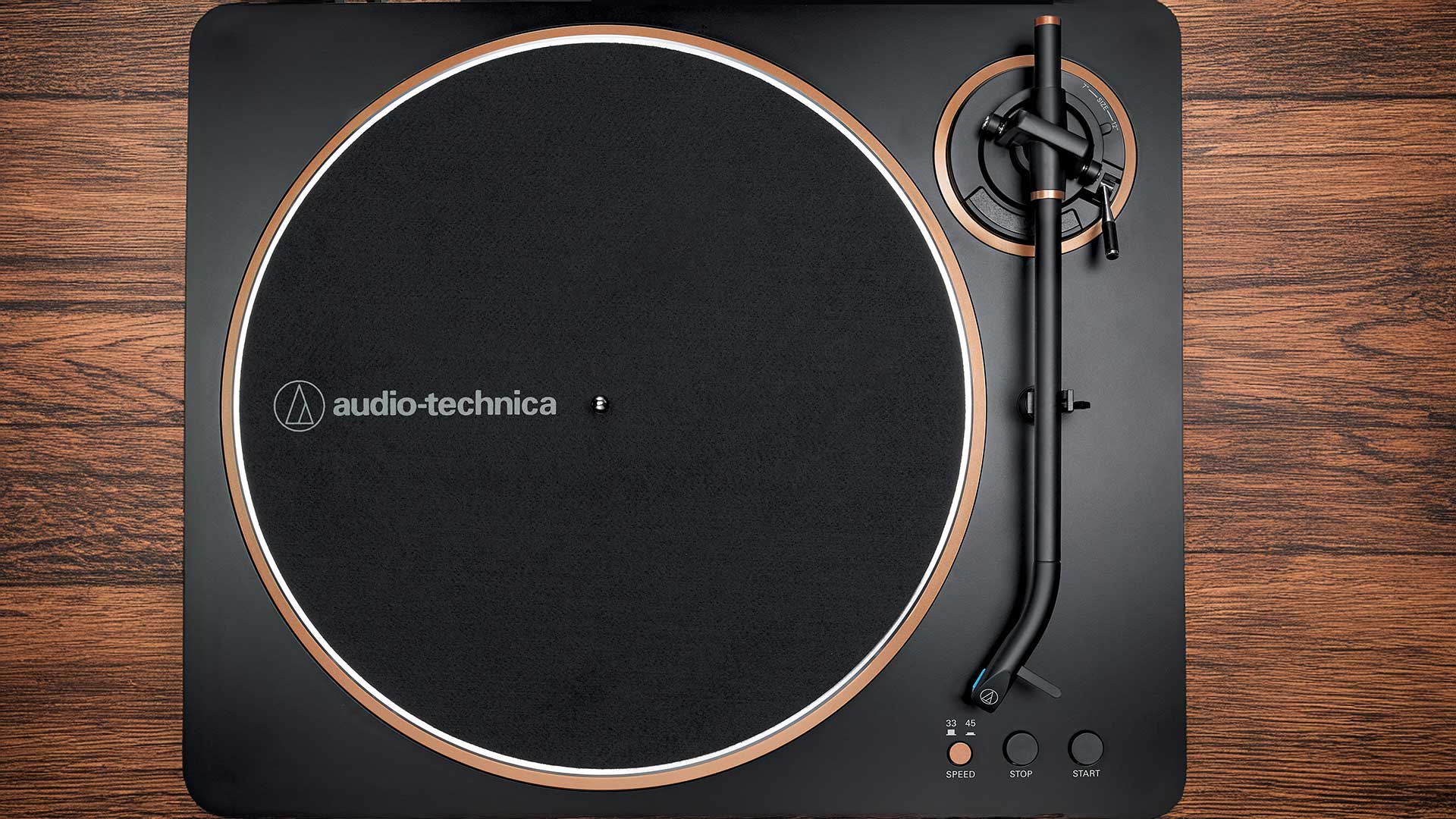
Build & facilities
The AT-LP70X is a helpful deck in both ease of set-up and ease of use, which thereby recommends it to the generation of users new to vinyl, who may have never levelled a tonearm nor sworn blue while trying to thread an antiskating weight. Neither procedure is required here.
Nor do you need a phono stage or phono input on your amplifier, because there is an electronics section slung underneath the turntable which houses a built-in switchable phono preamp, raising the output to line level, which will feed into anything, and doesn’t require that pesky fiddly earth cable.
The latest hi-fi, home cinema and tech news, reviews, buying advice and deals, direct to your inbox.
Alternatively you can flick the switch, add the fiddly earth cable, and use your own phono stage.
Continuing the convenience theme is “fully automatic operation”. This means that with one press of the ‘Start’ button the turntable spins up, the arm lifts and moves over the vinyl, and the arm drops into position to start playback. You can press (rather harder, as if against a big spring) the ‘Stop’ button, and the arm will lift and return to base before stopping the turntable. Even more usefully it does this automatically at the end of the side.
This is so very convenient that of course audiophiles will rail against everything that makes this marvel possible – its very complexity, the forces it might exert on the arm, the mere idea of extra bits which might rattle inaudibly. But one can wash away such worries at this level, and simply enjoy the fact that you won’t have to hover constantly in the room whenever you want to play singles, ready for when they end, because here the LP70x will do that for you. You can’t stack your singles up like in the old days, but at least you won’t wake up on the couch to that bump… bump… sound.
There is one potential pitfall of automatic operation, but happily here Audio-Technica has put the ‘Start’ and ‘Stop’ buttons on the top, and inside the perspex lid. On some designs it has left them outside and facing forward. They were so prominently forward and easy to push on the otherwise marvellous AT-LP3 of a few years ago that you could very easily nudge the Start and send the stylus crashing down on to the rotating felt mat; owners learned early to always to keep the arm-lift raised, so that can’t happen. It’s still a good rule to instil here, although the risk of accident is lower.
For playing those singles, by the way, two adjustments are required. The left button at bottom right pushes in to speed the deck up to 45rpm, while the adjustment for disc size is unusually made up at the tonearm mount, with a lever pulling over to mechanically define the disc dimensions. Remember to change both, or you could be back to the spinning mat disaster.
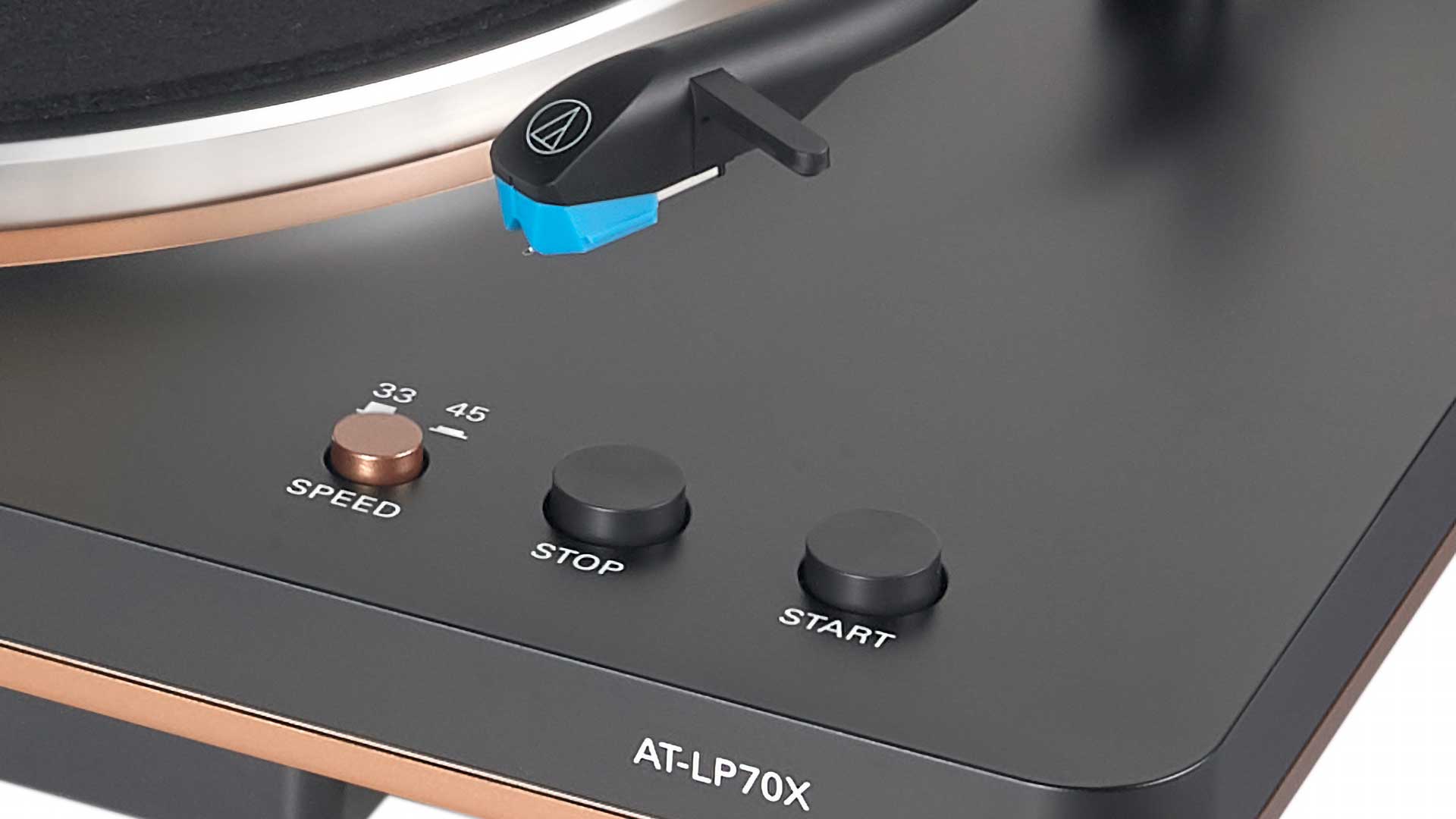

Speed: 33⅓, 45 (electronic)
Drive method: belt-drive
Platter: die-cast aluminium
Tonearm: J-shape, 220mm effective length
Cartridge: AT-VM95C non-removable
Stylus: VMN95C (replaceable)
Outputs: phono-level / line-level switchable
One of the obvious stars of the show here is the blue bit at the end of the arm: this is Audio-Technica’s famous AT-VM95C cartridge, or more accurately Audio-Technica’s famous VMN95C 0.6-mil conical-bonded stylus, here not slid into its usual removable cartridge head but instead into a fixed J-shaped tonearm. It’s ironic that this mounting solution is an economy compared with the detachable headshells of A-T’s higher level decks, yet might be considered an audibly superior option, removing connections, joints and weight right at the business end of the signal chain.
Besides, the VMN95C stylus punches above its weight, given a replacement cost of only some A$40, and you might even, when the time comes, instead replace it with a A$50 VMN95E, which is the even-better-regarded green stylus of the AT-VM95E, a cartridge which graced two of this year’s Sound+Image award-winning turntables, including one which sells at A$1999. And you could keep going, up to the highest stylus upgrade which will fit: the A$299 Shibata-profiled VMN95SH. So this is an easy way to get a little more quality when you have a little more money.
In terms of construction, we have to mention that we didn’t get quite what you’re getting. Our early sample from Japan was identical to final production (we were assured of this when we asked), but it was a rather lacklustre black and grey compared with the black and bronze which we see from the press images has actually now launched here in Australia. So we can only judge those aesthetics from these pictures; our black and grey version certainly looked and felt very much as something of the plastic age, though stylish in its way: there is a layered construction which might impart some rigidity (Audio-Technica highlights this as the main sonic advantage over the LP60x), while a low-hanging electronics unit underneath adds mass, if rather visibly so when the unit is up on a shelf and viewed from a lower couch position, which also highlights its fat but not squishy front feet.
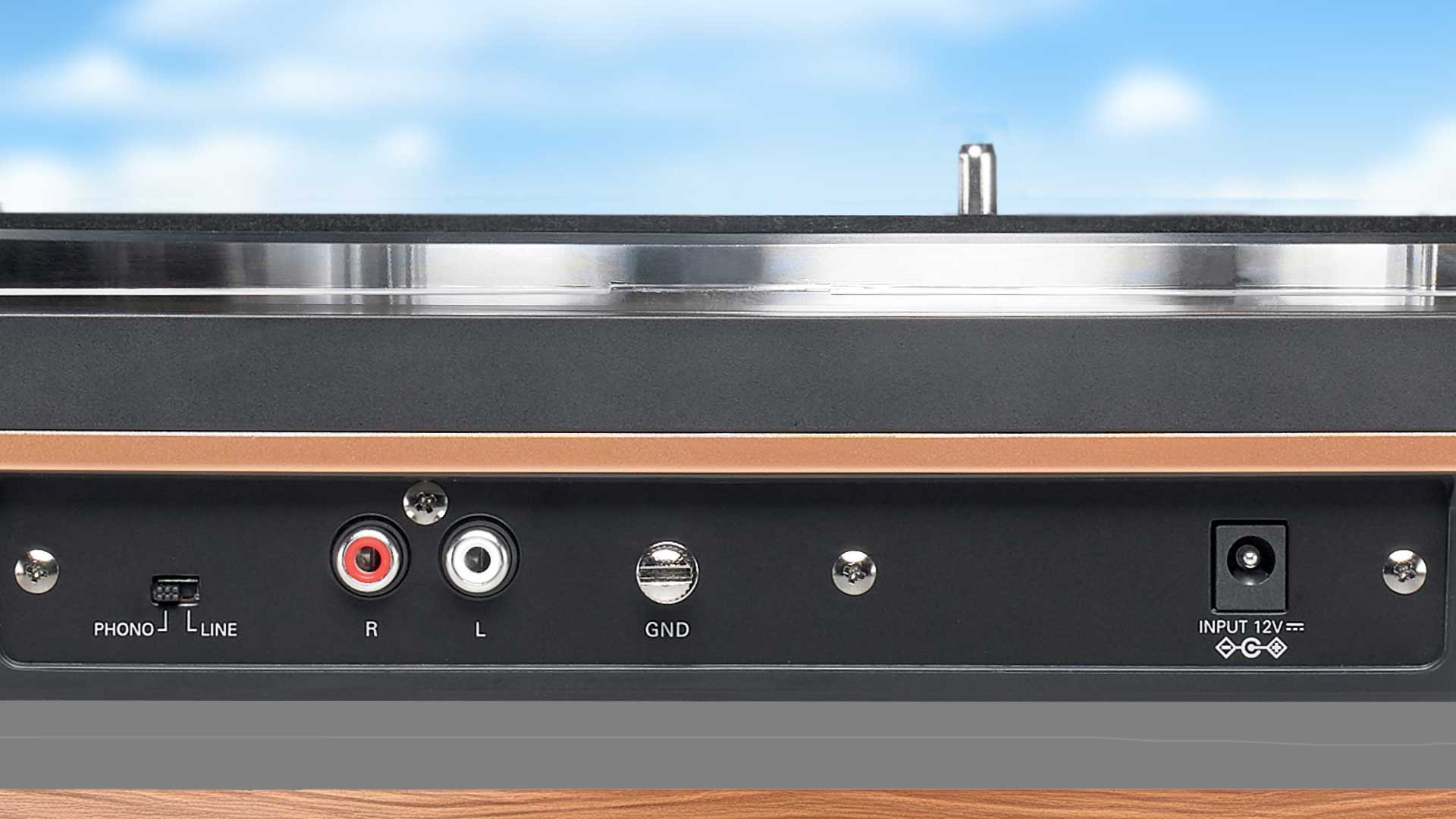
Setting up
In addition to the different livery, our review unit came missing its literature, cables, and one cover hinge, but that didn’t bother us much, as we can get by without instructions, and besides, we expected few set-up issues. And we had none, which is hardly surprising, as there’s very little indeed to put together here.
The cartridge itself is non-removable, as we’ve seen, so you don’t have to attach it during set-up, and amazingly there’s not even a counterweight to roll up the back of the arm, because it’s balanced just as it’s built – you won’t ever be changing the cartridge, so no adjustment is necessary.
There’s no antiskate force to apply either. Antiskating is applied on turntables to counteract the small force that pulls the tonearm towards the centre. At higher levels manufacturers may use a dangling weight which cleverly counteracts differently at the start or end of the disc. On lesser turntables, fixed antiskating may be applied with a spring, as here, with an unvarying antiskate here optimised for the 2g vertical tracking force of the integrated AT-VM95C.
This certainly simplifies set-up. You just put the die-cast aluminium anti-resonance (i.e. rimmed) platter over the spindle place, do the belt-attaching thing with the little ribbon so you don’t get your finger-grease on the rubber, and top it all with the Audio-Technica-branded felt mat. Plug in the signal cables and the remote AC powerpack, and you are ready to go. Well, you could level it first. None of the feet (the two back feet kinda stick out of the undercarriage) seemed adjustable, and so we levelled things up manually using a couple of CD jewel case lids under two of the feet (the irony!).
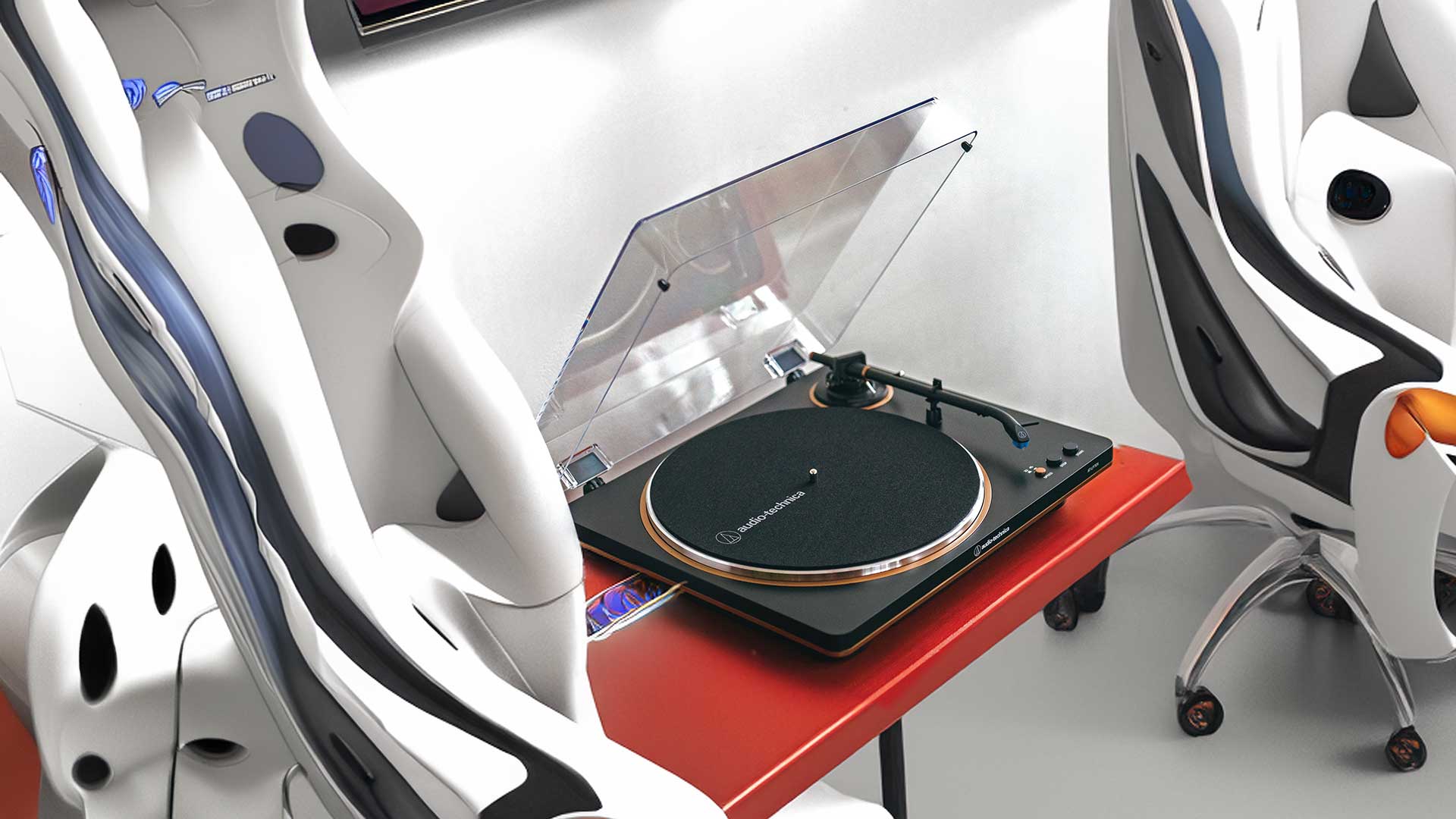
Listening sessions
A recently-cleaned secondhand copy of Dean Friedman’s ‘Well Well Said The Rocking Chair’ (it was the 1970s and drugs were rife) was immediately to hand, so we gave it our first spin on this Audio-Technica. Things started off well, rich in tone on the title track – far preferable to the rather thin sound of our digital copy, indeed. But on the middle track, Lydia, we could hear artefacts within the gentle Rhodes piano intro, and cracking left-channel distortion on peaks in Friedman’s vocal, and on the final chorus in particular. Alignment? No – we put a high-magnification glass to the stylus tip and was confused to find it square, not pointed. It was, in fact, strangled with muck. We used a stylus brush and the cleaning gel of our handy DS Audio ST-50 (other stylus cleaners are available), and returned to this track to enjoy a rather purer performance.
Next, a side of Fleetwood Mac. It’s always astounding to listen to side one of 'Rumours' – such end-to-end complete classics, and just the thing to show off the LP70x’s chops.
Our plastic pal ran with the music from end-to-end. On Second Hand News John McVie’s bass had real rattling timbre as well as depth, the high percussive right-channel guitars really jingled forth, and the rising left-channel guitar before the last chorus cut thrillingly through the whole sound. As for Stevie Nicks’ drawling entry on Dreams, the drum part building, the BVs wooing, and then that ‘Thunder only happens’ chorus: this was the full vinyl effect, it's why we love to enjoy an ordered and curated side of pressed black stuff.
Of course a higher turntable would elevate the experience – in Second Hand News, for example, opening up the central ball of energy here presented to render greater openness, separation and detail. But then you can always go higher. The delight here is how much music the AT-LP70X will insert into your system as a A$499 source. Check out the ping-ponged guitars of Never Going Back Again: pinging and ponging with real impulse power, and the central vocal clear and floating between them, perfectly isolated: this is hi-fi treasure, and the AT-LP70x didn’t short change the effect in any of the key hi-fi ways.
By the time Mr Mick’s central drum stomp was kicking out the joys of Don’t Stop, we were just jiving rather than judging for the rest of the side – at least until Songbird. This legendary hall recording is soft and quiet, and as McVie’s hard-won vocal rose to its peaks, there was a slight instability on the left side of vocal imaging. This is the final, inside track of the side, so it’s most at risk from the fixed antiskating here – yet the effect was relatively light, and the piano stayed true, so it’s hard to throw too much mud at that particular economy.
Singles fans should consider that these smaller discs have smaller centres and so require movement even further towards the central spindle; the effect of the fixed antiskating was more apparent on the last minute of music when we were spinning discs at 45 rpm.
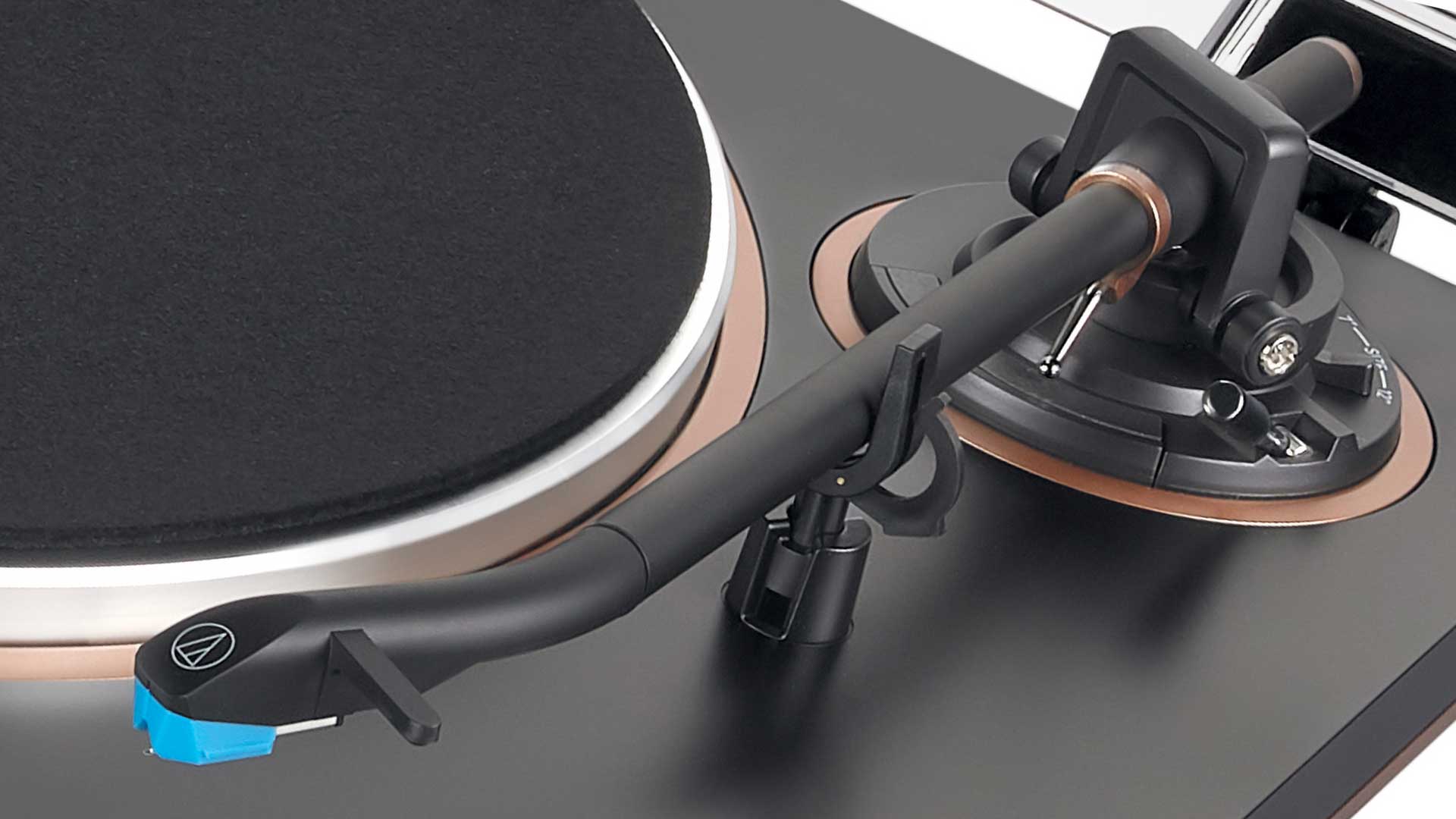
Off to the far end of the vinyl rack, just back from ABBA and John Adams, for Cannonball Adderley’s 'Somethin’ Else' (1997, Blue Note EMI-pressed 180g), on which he’s not shabbily assisted by the likes of Miles Davis and Art Blakey, all vying for attention within a wonderfully spacious mono recording which the LP70x rendered sturdily in its centrality, and thereby attesting to good parallel paths throughout the phono upscaling process to the line-level output, by which we had so far been listening.
We switched now to the phono output, plugging it into a Musical FIdelity phono stage, and adding the earth link, without which the buzz was tremendous, and after adding which all was banished but a low-level hum inaudible even under the gentler moments of Hank Jones’ piano. Sam Jones’ acoustic bass never dropped from view, and of course Miles’ muted trumpet would slice through anything short of a concrete bunker, and here sent our ears’ highest-tuned cilia a-shimmering until Cannonball would roll it back down to something smooth or, as it says on the tin, somethin’ else. The price of the AT-LP70x was certainly no barrier to a hi-fi delivery of the joys of jazz.
Ungatefolding our 1979 copy of Stevie Wonder’s loftily-titiled 'Journey Through The Secret Life Of Plants' (and why not), the advantage of adding the external phono stage was evident in a little more insight into the mixes (strange as such of them are, such as clattering drums of Kesse Ye Yolo De Ye – ‘A seed's a star’). But there was no great revelatory change, so that the advantages of later upgrading this deck with a $1500 phono stage will probably be outweighed by the advantages of instead buying a $1500 turntable.
Besides, there is also the rather cheaper option of seeking that extra detail by upgrading the stylus here. (Just take great care when pulling the stylus off and on; it's tight.)
The mild effect of upgrading the phono stage also shows that the one built into the AT-LP70x doesn’t much hold it back, and that will figure into the quality of music delivered by its Bluetooth-equipped sister, the logically-suffixed AT-LP70xBT, for whose wireless glories A$100 extra is payable. That Bluetooth version can then send the music wirelessly to speakers or headphones, using either the aptX adaptive codec or plain aptX if your receiver supports it; non-aptX devices will drop back to SBC codec quality.
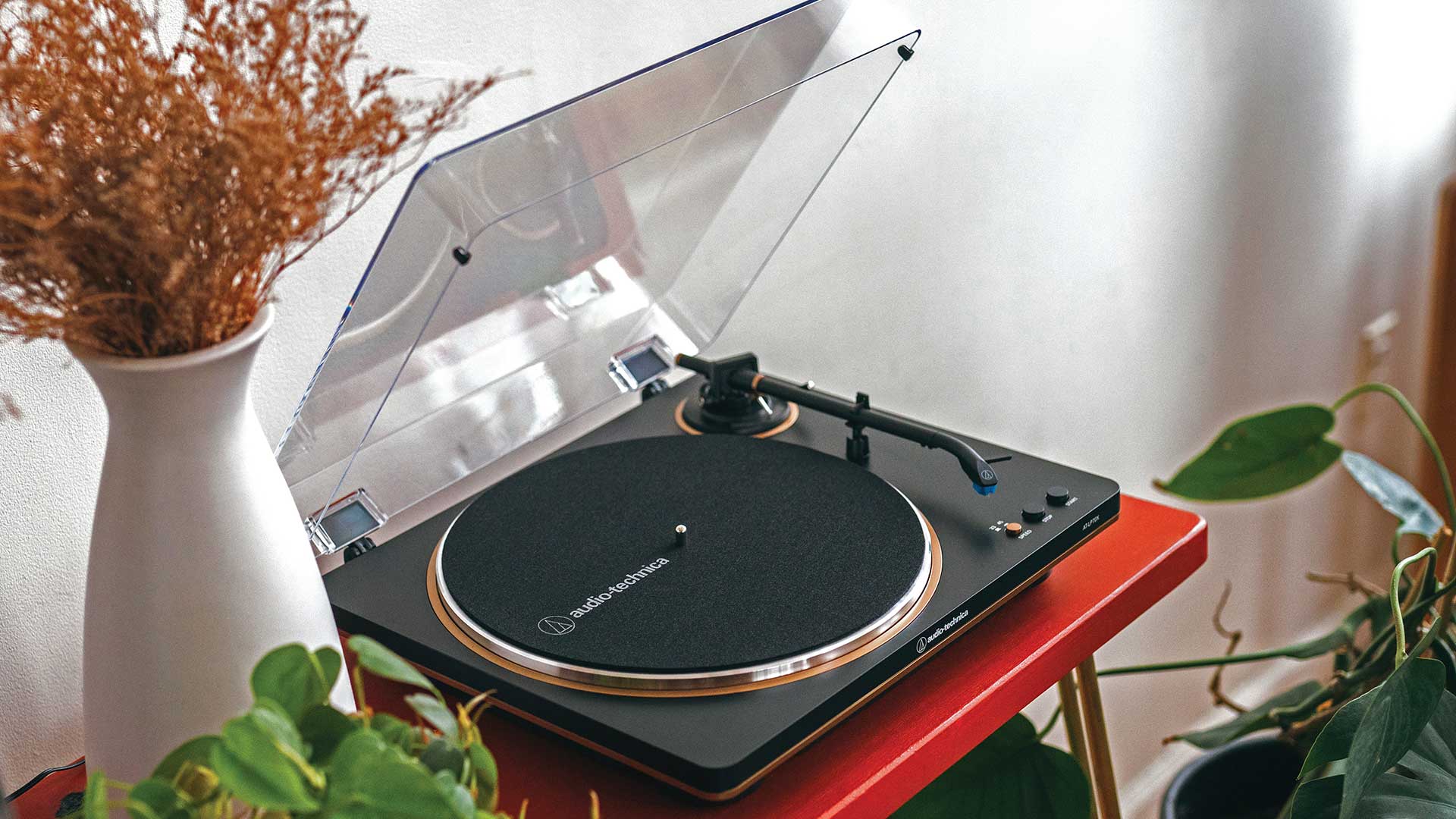
Verdict
Going with the bronze option only here in Australia is, we think, a sensible call; it minimises the impression that the design is, as we noted, from the Plastic Age. But then if you’d prefer something harking back nostalgically to the Wooden Age, you’ll need to pay at least several hundreds of dollars more.
So the bronze is a nice compromise, as are the automatic operation, the almost zero-effort set-up, and the performance, which is impressive and enjoyable at the price, and easily upgradeable if you want a bit more.
A higher turntable would of course open up the presentation further, but the delight here is how much music the AT-LP70x does insert into your system as a very easy-to-use A$499 source. We think Audio-Technica’s founder would be delighted with it.

Jez is the Editor of Sound+Image magazine, having inhabited that role since 2006, more or less a lustrum after departing his UK homeland to adopt an additional nationality under the more favourable climes and skies of Australia. Prior to his desertion he was Editor of the UK's Stuff magazine, and before that Editor of What Hi-Fi? magazine, and before that of the erstwhile Audiophile magazine and of Electronics Today International. He makes music as well as enjoying it, is alarmingly wedded to the notion that Led Zeppelin remains the highest point of rock'n'roll yet attained, though remains willing to assess modern pretenders. He lives in a modest shack on Sydney's Northern Beaches with his Canadian wife Deanna, a rescue greyhound called Jewels, and an assortment of changing wildlife under care. If you're seeking his articles by clicking this profile, you'll see far more of them by switching to the Australian version of WHF.
